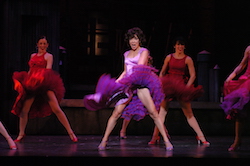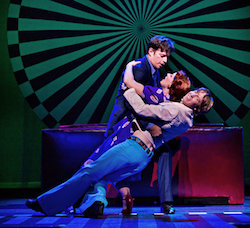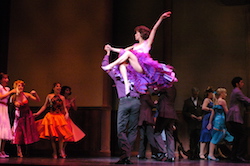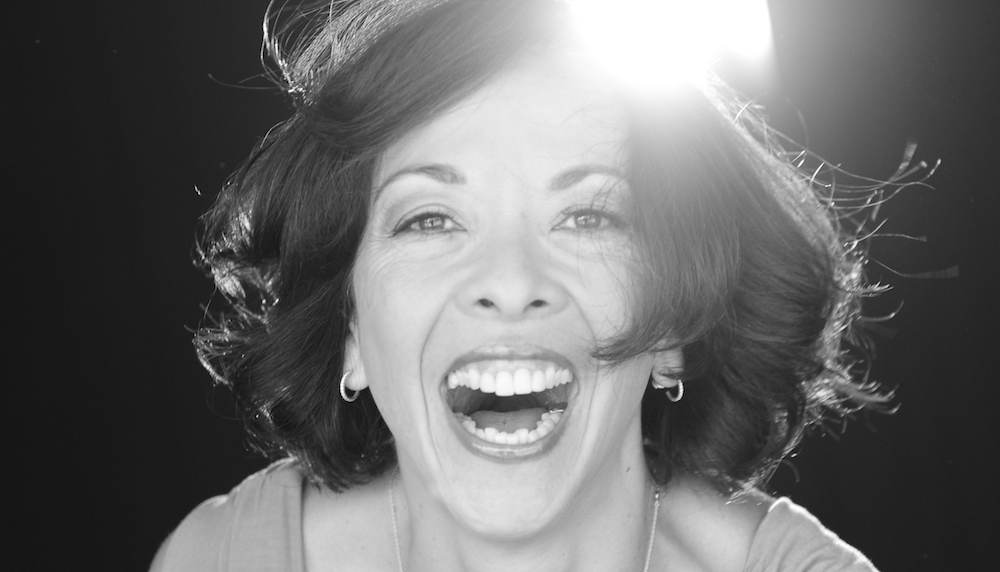Even if you’ve had a luminous career on Broadway, jumping to the other side of the table (as a part of the creative team) is no simple task. JoAnn M Hunter, who has performed in an astounding 12 Broadway shows and served creatively on another seven, admits that she’s still growing and exploring as a choreographer. As a dancer, Hunter worked with some of the greats like Rob Ashford, Rob Marshall, Kathleen Marshall, Bill T. Jones, Peter Gennaro, Ann Reinking and Christopher Chadman. Her versatility, talent, work ethic and impressive resume led to her rise to the role of dance captain, then to associate choreographer, and finally to choreographer with a voice and vision of her very own.
Now at the top of her game with School of Rock on Broadway and out on tour, an artist residency with the Broadway Dance Lab, and a number of new works on the docket for 2018, Hunter remains true to her roots as a gypsy: pay your dues, do the work, stay inspired, keep challenging yourself, and learn to embrace the nerves! Dance Informa had the pleasure of interviewing Hunter about her transition from dancer to choreographer and her advice for others who wish to do the same.

JoAnn M Hunter in ‘West Side Story’. Photo courtesy of LSG Public Relations.
After 12 (wow!) Broadway shows, you made the leap from dancer to associate choreographer to choreographer. What was that transition like?
“The transformation was not an easy one. For me as a performer, I knew exactly what I needed to do to book the next gig. I went to the audition, showed them my talent, if they liked me they would explore more, and then, if all went well, I booked the job.
As a choreographer…well, that is a whole different game. Auditioning is something they really do not do (meaning giving you dancers and allowing you to show the powers that be what you can do and how you can tell a story through movement to prove you can create a dance to further the plot of their show). I wish it was that way! Just like a dance resume, as a choreographer, you need to have a body of work that producers or directors can see, but you need the show to add to your body of work. It’s tough, but nothing in this business is easy! Working as an associate choreographer was great for me to gain experience and start to be taken more seriously on the creative side.”
How does your experience as a gypsy lend to your career ‘on the other side of the table’?
“I think my experience as a dancer in many shows working with different choreographers has been a great asset. I have learned so much by working under some wonderful talent, and now I am able to take the knowledge and inspiration I stored and create my own works. I also know from my own personal experience how hard it is to dance in a show and to audition for job after job. I understand where dancers are coming from, and I feel honored and excited to be in a room with them.”
Both your performing credits and creative credits are so diverse! How would you describe your vision/aesthetic as a choreographer?
“I’d like to say that I am as diverse in my aesthetic as a choreographer as I was as a performer. I love the challenge of working on something that may be out of my wheel house at that moment. I urge dancers to study with as many different teachers as possible in order to diversify themselves. But no matter the style or theme of a piece, at heart, my choreographic vision is always to keep the story moving. It is of utmost importance to me.”
What or who inspires you?
“Jerry (Jerome) Robbins is my number one inspiration.”

Harry Connick Jr. in ‘On a Clear Day You Can See Forever’, choreographed by JoAnn M Hunter. Photo by Martha Swope.
What is your creative process like (research, pre-production with a few dancers, improvisation)? Does it change depending on the project?
“My process begins with the story — the script. Then I experience the music and lyrics. Once I feel I have a grasp on how I can contribute to the story with movement, then I begin on crafting the concept of each number/piece. What am I trying to say? How can I elaborate on the song to continue moving the story forward? Once I have my direction, I get my dance arranger in the room, and we begin discovering how to transform that idea into dance. I look at photos from the time period of the show. Photos often inspire me to discover and create the vocabulary of movement for a specific piece. And then finally, I bring the dancers into the room to try and put all these ideas onto their feet!
Now, I do not always have a dance arranger. Some shows do not need them. I approach every show as if I do not know or expect a thing. This helps me keep an open mind (and spirit) to tackle any challenges that might come my way during the process. I don’t necessarily think there is any right or wrong way of approaching the creative process. But coming at it organically provides me with both structure and freedom so I can explore and use my imagination but don’t feel overwhelmed by the immensity of the project.”
You’ve mostly choreographed for the stage. Are you interested in exploring dance on film?
“I love live theatre. But yes, I would love to explore dance on film, and I know it would open up so many creative outlets because of what you can do on film with editing and special effects. We’ll see what the future holds!”
Last year, you created a cool piece with Broadway Dance Lab (BDL). Can you tell us about the work and your experience with BDL?
“BDL is awesome! When you’re trying to create a new story with dance, you need two resources: space and dancers. BDL afforded me with both. The piece that I am working on with my collaborators, Tony Speciale, Adam Faulkner and David Dabbon, is called Perfect Spiral and focuses on…football! Inspired by true events, Perfect Spiral is an original dance-theatre event drawn from a variety of found texts, including private journal entries, interviews with football players, articles, scientific research and other documentary material in the public domain. The main character, 17-year-old Zac Wegman, is every parent’s dream: he’s handsome, intelligent, athletic and poised to get a full scholarship at any college of his choice. There’s only one problem…something mysterious is devouring his brain — CTE (Chronic Traumatic Encephalopathy). Perfect Spiral explores our love, obsession with and fear of one of the greatest American phenomena: football.”
What was it like performing in the anniversary of Thoroughly Modern Millie for The Actors Fund?
“Well, it was actually the 16-year anniversary from when we opened on Broadway. Wow! It was a truly magical experience but also nerve-wrecking. I have not performed in about 14 years, and I am not used to experiencing those feelings of stage fright anymore. I’m out of practice. The nerves as a performer are so different from the nerves on the other side of the table. I did not realize that until the half-hour call to top of show!”

JoAnn M Hunter in ‘West Side Story’. Photo courtesy of LSG Public Relations.
What advice would you give to dancers looking to make the transition from performer to creative?
“Surround yourself with people you respect and admire, and then do all you can to listen and learn. You’re going to have to pay your dues; it is not an overnight thing. Work hard, stay humble, and never stop learning.”
Can you tell us what you’re working on?
“I’ve got a busy year ahead of me. I am about to be part of a lab of the Untitled Project with Andrew Lloyd Webber in April. In the fall, I am slated to work on an out-of-town production of A Sign of the Times written by Bruce Vilanch, then School of Rock in Australia, and Ever After at the Alliance Theatre in Atlanta. It’s a lot on my plate, but all new and exciting projects. I am also hoping to continue developing Perfect Spiral this summer. Stay tuned!”
For more information on JoAnn M Hunter, visit www.joannmhunter.com.
By Mary Callahan of Dance Informa.













